arm开发-基于 OpenHarmony AsyncHttpt 网络请求组件开发指南
推荐 原创1. AsyncHttpHarmony 功能介绍
我们在做鸿蒙应用开发过程,用 java 原生的 HttpsURLConnection 实现网络请求很难高效的达到预期的效果。我们需要处理数据解析,子线程通知 UI 线程更新。
这里我们就基于三方原生的网络框架AsyncHttpClient 二次封装更加高效实现网络请求及数据解析。同时鸿蒙为我们提供了一个TaskDispatcher 类派发同步任务达到更新 UI 的效果
2. AsyncHttpHarmony 使用方法
2.1. 为应用添加 httplibrary-debug.har 包依赖
在应用模块中调用 HAR,常用的添加依赖的方式包括如下两种。
方式一:依赖本地 HAR
第一步:将 httplibrary-debug.har 复制到 entry\libs 目录下即可(由于 build.gradle 中已经依赖的 libs 目录下的*.har,因此不需要在做修改)。
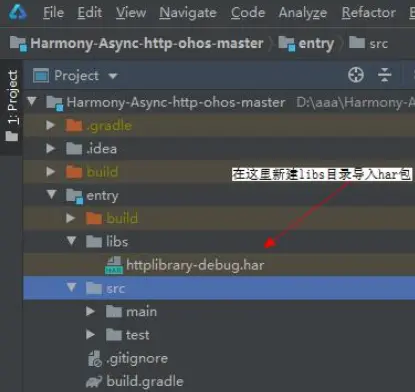
查看工程目录中 build.gradle 下的*.har 是存在

第二步:除了依赖以上 har 之外还需要添加外部依赖用来实现 Header 类的引入,引入方式如下图,引入完之后同步下就可以使用。

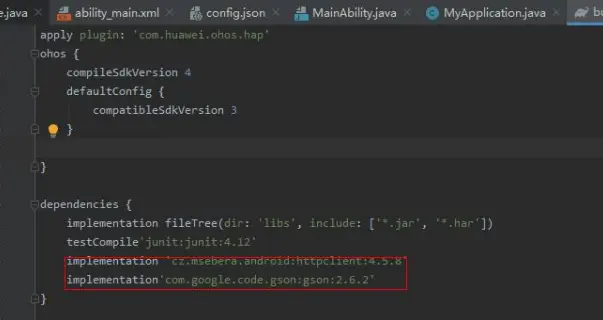
以上操作无误之后就可以进行编码了!
2.2. 主页面的布局文件
定义一个 Text 文本用来显示请求返回的数据,定义一个 text 实现请求点击事件

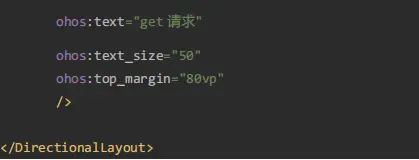
2.3. MainAbilitySlice 代码如下
核心代码是 initListener,其中声明了一个 AsyncHttpClient 对象,设置请求参数,然后调用 get 方法获取 ulr 返回结果,然后通过 TaskDispatcher 类派发同步任务达到更新 UI 的效果,
代码如下:
package com.huawei.asynchttpharmonyos.slice;
import com.example.httplibrary.utils.AsyncHttpClient;
import com.example.httplibrary.utils.JsonHttpResponseHandler;
import com.example.httplibrary.utils.RequestParams;
import com.huawei.asynchttpharmonyos.ResourceTable;
import cz.msebera.android.httpclient.Header;
import ohos.aafwk.ability.AbilitySlice;
import ohos.aafwk.content.Intent;
import ohos.agp.components.Component;
import ohos.agp.components.Text;
import ohos.hiviewdfx.HiLog;
import ohos.hiviewdfx.HiLogLabel;
public class MainAbilitySlice extends AbilitySlice {
private Text tvRequest,tvResult;
private static final String TAG = "MainAbilitySlice";
private static final HiLogLabel label=new
HiLogLabel(HiLog.DEBUG,0x00100,"async-http");
@Override
public void onStart(Intent intent) {
super.onStart(intent);
super.setUIContent(ResourceTable.Layout_ability_main);
initView();
initListener();
}
private void initView() {
tvResult = (Text) findComponentById(ResourceTable.Id_tvResult);
tvRequest = (Text) findComponentById(ResourceTable.Id_tvRequest);
}
private void initListener() {
tvRequest.setClickedListener(new Component.ClickedListener() {
@Override
public void onClick(Component component) {
String url="https://apis.juhe.cn/simpleWeather/query";
String key="32becf485f7f174d4385957b62f28f61";
//这里获取 AsyncHttpClient 实例,这个类提供了 get post delete put 请
求对外的接口方法
AsyncHttpClient client=new AsyncHttpClient();
//这里是我们包装参数的实体类
RequestParams params=new RequestParams();
params.put("city","西安");
params.put("key",key);
/这里是实现 get 请求的方,JsonHttpResponseHandler 会重写请求成功的
onSuccess 和 onFailure 两个方法,两个方法内部做具体业务逻辑
client.get(url,params, new JsonHttpResponseHandler() {
@Override
public void onSuccess(int statusCode, Header[] headers,
String responseString) {
super.onSuccess(statusCode, headers, responseString);
HiLog.error(label,"zel-onSuccess:"+responseString,responseString);
// 通知主线程更新 UI
getUITaskDispatcher().asyncDispatch(new Runnable() {
@Override
public void run() {
// 这里具体业务 Text 文本显示请求数据
tvResult.setText(responseString);
}
});
}
@Override
public void onFailure(int statusCode, Header[] headers,
String responseString, Throwable throwable) {
super.onFailure(statusCode, headers, responseString,throwable);
HiLog.error(label,"zel-onFailure:"+responseString,responseString);
}
});
}
});
}
@Override
public void onActive() {
super.onActive();
}
@Override
public void onForeground(Intent intent) {
super.onForeground(intent);
}
}
3. AsyncHttpHarmonyDemo 实现效果
请求前:
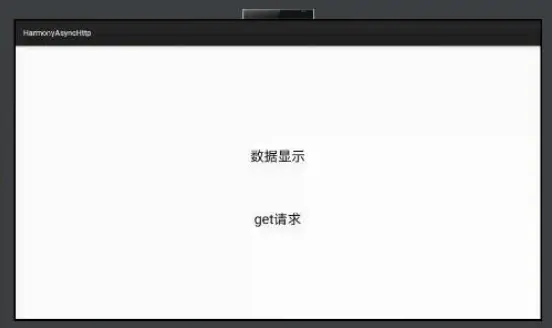
点击 get 请求之后
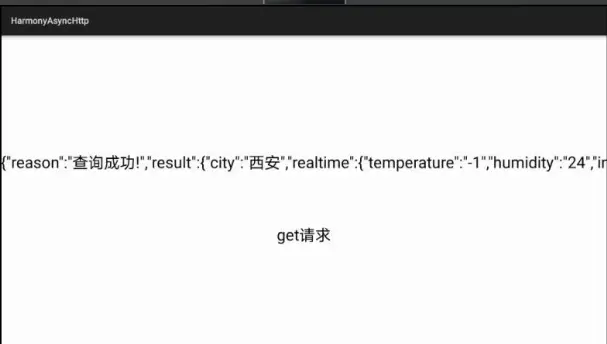
4. AsyncHttpHarmony 核心方法说明
AsyncHttpClient :通过实例对象的 get 方法发起 get 请求实现内部两个方法(请求成功
失败方法)
1:onSuccess(int statusCode, Header[] headers, String responseString) {} 其中第三个参数就是返回的数据
2:onFailure(int statusCode, Header[] headers, String responseString, Throwablethrowable) {} responseString 返回请求失败的 json 数据
AbilityContext:由 AbilitySlice 继承过来的 getUITaskDispatcher()返回一个 TaskDispatcher 实例来分发任务,TaskDispatcher 是一个任务分发器,它是 Ability 分发任务的基本接口,隐藏任务所在线程的实现细节,主要特点是在 UI 线程上运行的任务默认以高优先级运行通过 syncDispatch()派发同步任务达到更新 UI 的效果
为了能让大家更好的学习鸿蒙(HarmonyOS NEXT)开发技术,这边特意整理了《鸿蒙开发学习手册》(共计890页),希望对大家有所帮助:https://qr21.cn/FV7h05
《鸿蒙开发学习手册》:
如何快速入门:https://qr21.cn/FV7h05
- 基本概念
- 构建第一个ArkTS应用
- ……
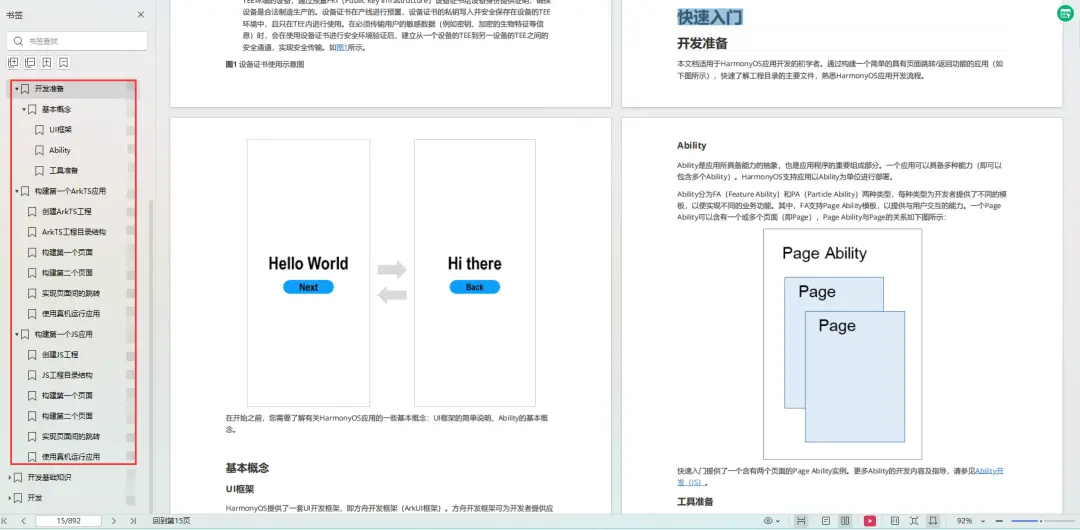
开发基础知识:https://qr21.cn/FV7h05
- 应用基础知识
- 配置文件
- 应用数据管理
- 应用安全管理
- 应用隐私保护
- 三方应用调用管控机制
- 资源分类与访问
- 学习ArkTS语言
- ……
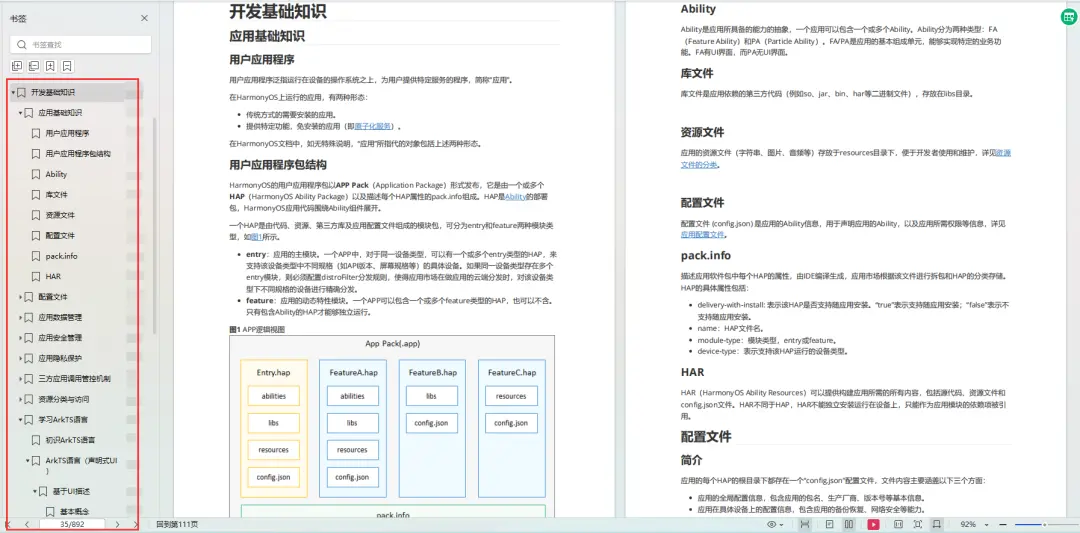
基于ArkTS 开发:https://qr21.cn/FV7h05
- Ability开发
- UI开发
- 公共事件与通知
- 窗口管理
- 媒体
- 安全
- 网络与链接
- 电话服务
- 数据管理
- 后台任务(Background Task)管理
- 设备管理
- 设备使用信息统计
- DFX
- 国际化开发
- 折叠屏系列
- ……
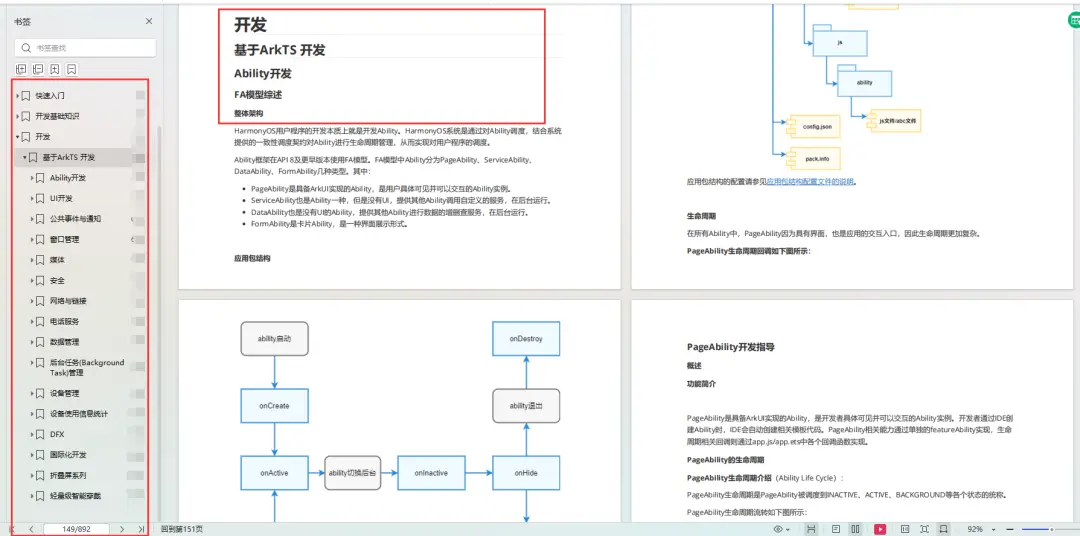
鸿蒙开发面试真题(含参考答案):https://qr18.cn/F781PH
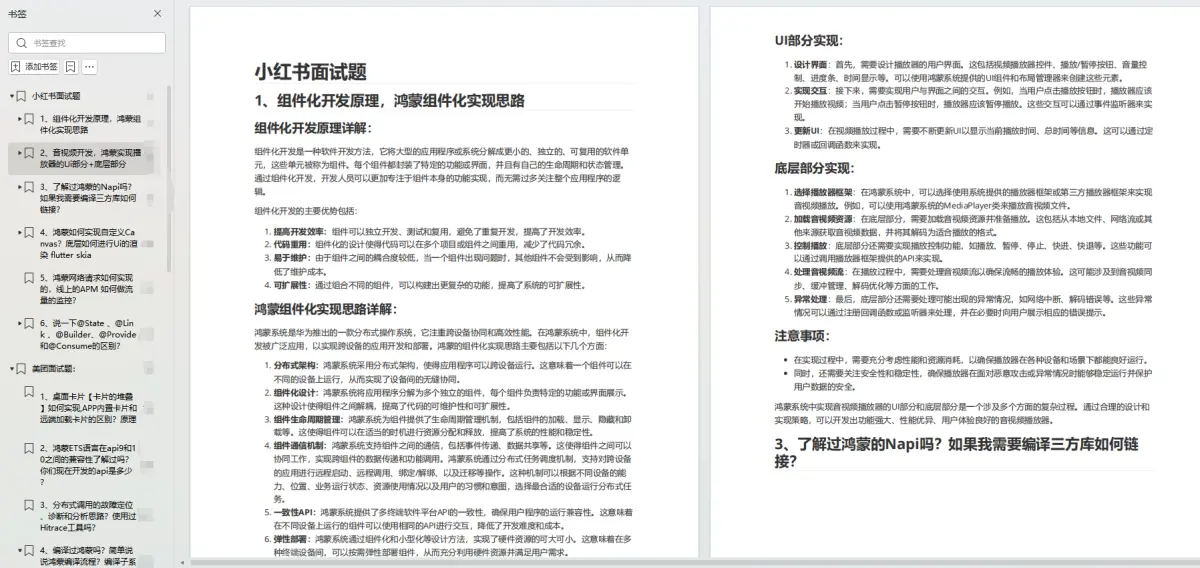
鸿蒙开发面试大盘集篇(共计319页):https://qr18.cn/F781PH
1.项目开发必备面试题
2.性能优化方向
3.架构方向
4.鸿蒙开发系统底层方向
5.鸿蒙音视频开发方向
6.鸿蒙车载开发方向
7.鸿蒙南向开发方向
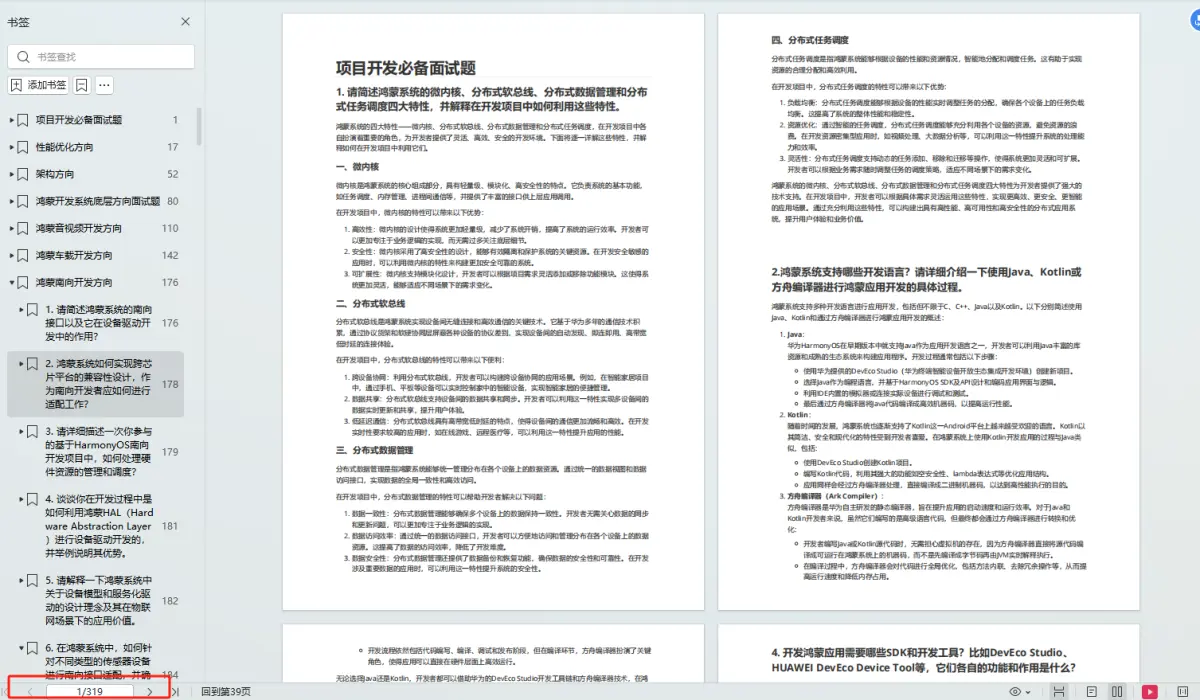
更多【arm开发-基于 OpenHarmony AsyncHttpt 网络请求组件开发指南】相关视频教程:www.yxfzedu.com
相关文章推荐
- 网络-网络安全和隐私保护技术 - 其他
- 安全-webgoat-Security Logging Failures安全日志记录失败 - 其他
- 笔记-【动手学深度学习】课程笔记 05-07 线性代数、矩阵计算和自动求导 - 其他
- 安全-水利部加快推进小型水库除险加固,大坝安全监测是重点 - 其他
- 微服务-Java版分布式微服务云开发架构 Spring Cloud+Spring Boot+Mybatis 电子招标采购系统功能清单 - 其他
- 开发语言-怎么学编程效率高,编程练习网站编程软件下载,中文编程开发语言工具下载 - 其他
- 安全-iPortal如何灵活设置用户名及密码的安全规则 - 其他
- 集成测试-如何使用 Loadgen 来简化 HTTP API 请求的集成测试 - 其他
- yolo-基于YOLOv8与DeepSORT实现多目标跟踪——算法与源码解析 - 其他
- 编程技术-【机器学习】Kmeans聚类算法 - 其他
- 集成学习-【Python机器学习】零基础掌握RandomForestRegressor集成学习 - 其他
- java-LeetCode //C - 373. Find K Pairs with Smallest Sums - 其他
- 集成学习-【Python机器学习】零基础掌握StackingClassifier集成学习 - 其他
- 编程技术-如何提高企业竞争力?CRM管理系统告诉你 - 其他
- java-Java - Hutool 获取 HttpRequest:Header、Body、ParamMap 等利器 - 其他
- c++-C++特殊类与单例模式 - 其他
- 编辑器-vscode git提交 - 其他
- 前端-WebGL的技术难点分析 - 其他
- c++-【c++之设计模式】组合使用:抽象工厂模式与单例模式 - 其他
- python-【JavaSE】基础笔记 - 类和对象(下) - 其他
2):严禁色情、血腥、暴力
3):严禁发布任何形式的广告贴
4):严禁发表关于中国的政治类话题
5):严格遵守中国互联网法律法规
6):有侵权,疑问可发邮件至service@yxfzedu.com